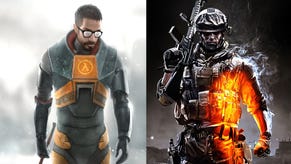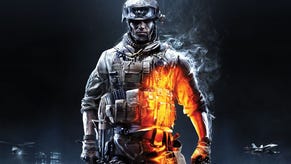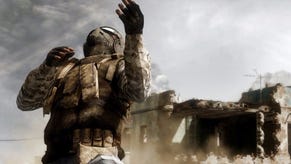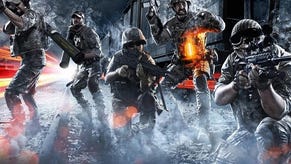Tech Analysis: Battlefield 3 PC
Tomorrow's technology today.
On the multiplayer front, the decision to go with these new APIs has a massive impact on the actual competitive playability of the game. For example, another of the major additions offered here are Order Independent Transparencies, allowing for effective blending of multiple layered transparency effects, particularly in cases where they overlap and interact with each other. Once written out to memory, these layered effects can also be blended with atomic particles, such as ash or sparks, giving a much busier look to indoor scenes. Much like the many post-processing effects used by the game, this obscures the player's view in a realistic manner. Also interesting is that smoke has real volume in Battlefield 3, to the point where it casts shadows.
In practise, this means that looking through a sequence of two or more muddied glass panes with lit particle effects flying about between them resolves itself without errors. An attempt to sidestep the issue for the sake of DX9 support could have invoked crude simplifications or even omissions to the visual make-up of the game, which wouldn't have been ideal for an even multiplayer experience. Much like the notion of removing any foliage or objects in a scene, such a clinical, pared down look would have given those running on lower settings an unfair advantage.
Much like in Bad Company 2, tessellation is also a staple feature in the DX11 incarnation of the game, though the implementation is more accomplished in the new game. This provides extra 3D definition to textures by approximating a small mesh around portions of otherwise flat surfaces, or elements of geometry. The result here is well worthwhile. Cobblestones and ruined roads now show convincing peaks and troughs in formation, while meshes on characters are much more distinct.
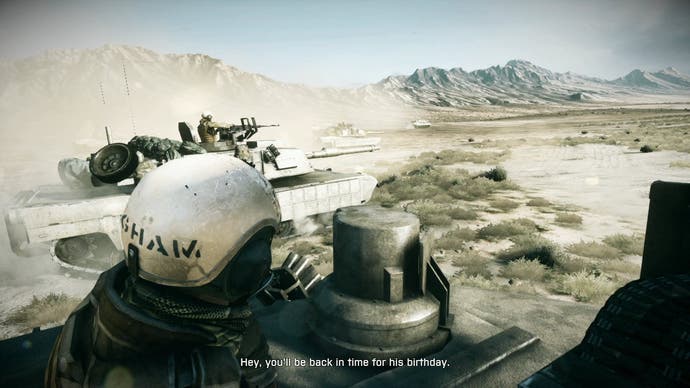
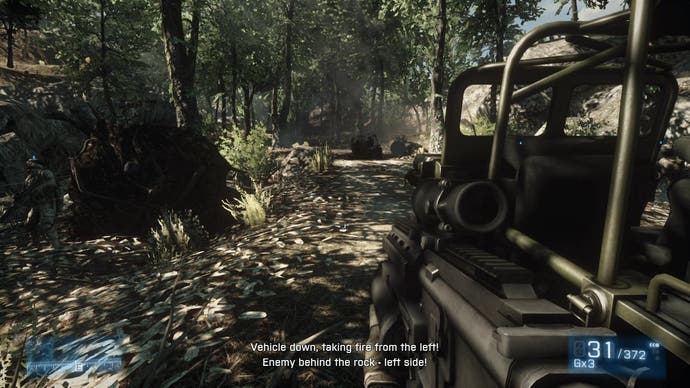
Lights, Camera, Action
These optimisations also extend to lighting, which is often cited by DICE as the biggest step forward for the engine. It is now capable of many more light sources thanks to Compute Shader support, which presents a new way for programmers to write for graphics hardware. The idea is reminiscent of Killzone 3's deferred shading, but in this case the GPU is being treated like a parallel CPU, with the lighting implemented in a separate pass to the main rendering.
The rendering pipeline now sees the general geometric layout of a scene being sent to the GPU as a large G-buffer, at which point the tile-based lighting model fills in by the pixel at a later stage. This is rather than addressing each object with a lighting in one concurrent pass, as per the conventional solution. Thanks to the culling of unneeded light sources afforded by this selective approach, this allows for everything from emissive particles to specular highlights to run in tandem whilst saving greatly on RAM bandwidth on more restrictive cards.
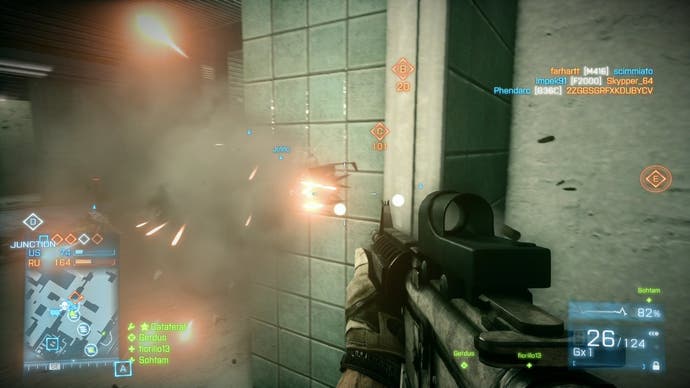
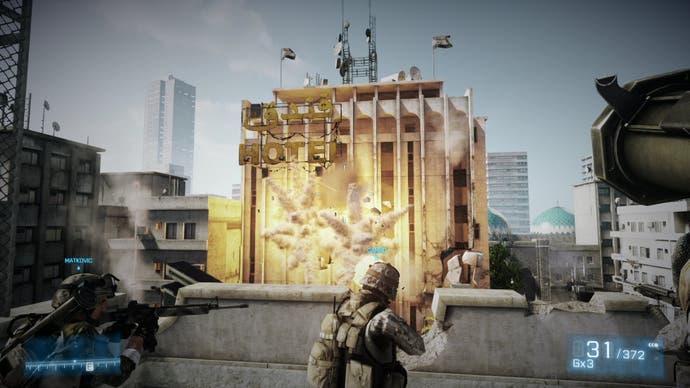
The importance of such a streamlined method of rendering lighting to a scene is not to be understated, and even manifests itself in particle effects such as ash or dust. Not only can these particles reflect and inflict shadows of their own accord as they float mid-air, but they can also serve as small dynamic, light sources themselves.
DICE's Johan Andersson has much to say on the matter, explaining that "we can also have destructible light sources, and animating light sources. The cost of the lighting in a scene is more dependent on the number of pixels the lighting covers, rather than the number of objects it covers. So we can have a highly flexible lighting scheme here."
This new approach realises a game experience that wasn't possible before, with even flashlights and laser-sights now producing a blinding bloom effect over the player's field of view. For DICE, the principle of bloom is very much considered a part of the High Dynamic Range (HDR) pipeline, whereby if a light source exceeds the average contrast value in any given environment, it bleeds over. Although its implementation on flash-lights can be slightly overbearing at times, particularly during levels set during daylight where they perhaps shouldn't have so great an influence by contrast to the global illumination, it is still impressive to have the effect implemented into the run of play.

